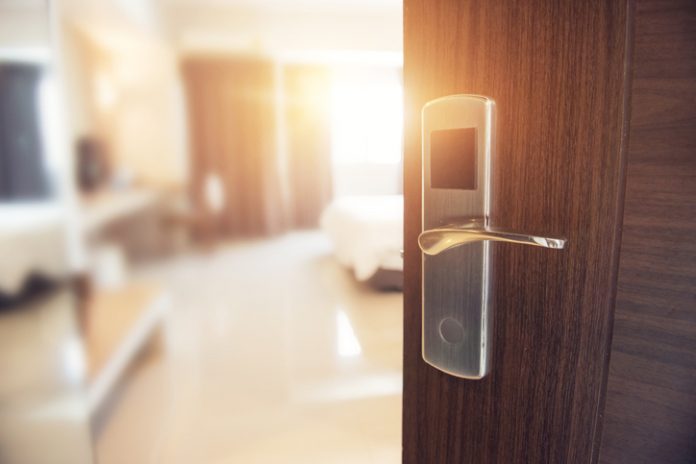
Hoteliers reopening their doors amid the pandemic are reworking their procedures to ensure guests and employees are safe. From utilizing mobile check-in and key card technology to ensuring six feet of distance between lobby and dining room seating arrangements, these COVID-19-related changes take many forms.
Efforts to stop the spread of pathogens focus on limiting human interaction. For hoteliers, this means eliminating unnecessary instances of human contact and providing adequate spacing to adhere to social distancing. As a result, many hotels are temporarily repurposing common areas as additional storage—for example, a conference room may now house the extra tables from the hotel restaurant, while excess lobby seating occupies the employee breakroom.
The combined result of these efforts is twofold—they not only decrease instances of human contact but also increase the efficiency of cleaning and sanitization practices by reducing the touchpoints and surfaces available to guests. Simple fixes like these offer worthwhile benefits for employees and guests alike.
Unfortunately, however, these operational changes bring unintended consequences when it comes to effective pest management. While helpful in combatting the spread of pathogens, these efforts open the door to pests in a new way. Hotels updating operations should consider these pest risks and tips:
Removing Touchpoints
As guests avoid coming into close contact with one another, many are opting for the stairs over the elevator. Propped stairwell doors provide easy access for pests such as flies, mosquitoes, and rodents. Instead, keep doors closed and place hand sanitizer near entry points to account for both pests and pathogens. Provide garbage cans on each landing to reduce the amount of waste dropped in the stairwells and avoid attracting pests.
Additionally, touchpoints like drawers and shelves may be left undisturbed for long periods of time. During cleaning shifts, ask staff to pay extra attention to these areas, checking them for pest activity.
Additional Storage Areas
Storage areas provide the perfect climate for pests: Dark, unmonitored spaces with plenty of crevices to make cockroaches and rodents feel at home. Closely monitor new storage areas to help keep pest activity to a minimum. To control pest introductions, store items in rows and allow room for frequent inspection with a flashlight. Before moving additional items into storage, be sure to inspect furniture pieces for bed bugs, which can quickly spread throughout the new space, leading to a hotel-wide infestation once the pieces return to their usual location. If items are already in storage, ensure they are inspected as things return to normal.
Decreased Staff and Staggered Shifts
Pest management is most effective when it’s a team effort since employees play a crucial role in helping identify a potential pest problem. In the wake of COVID-19, measures hotels take to limit on-site staff result in fewer eyes on the lookout for pests. Signs of pest activity, like rodent droppings, can easily go overlooked without all hands-on deck. Whether from a staggered schedule or increased remote working, fewer employees on-site at any one time also reduces foot traffic, leaving hotels more vulnerable to pests.
Vacant Dining Spaces
The shift to contactless services has resulted in some hotels closing dine-in spaces completely. Just because a restaurant space is closed doesn’t mean it’s still vacant. In fact, it may be more susceptible to pest infestations as decreased traffic allows pest hot spots to go undisturbed and unmonitored. And if the space closed abruptly, it’s likely that critical cleaning and sanitation steps might have been overlooked. This is a dangerous combination since unkempt kitchens can attract rats, mice, and German cockroaches, especially as they search for new food sources.
While adjusting a hotel’s operations, remember what these changes mean for your building’s susceptibility to pest activity. Prioritizing the health of guests and employees is critical, but without careful attention to pest threats, hotels could unintentionally put guests—and the property’s reputation—at further risk.











